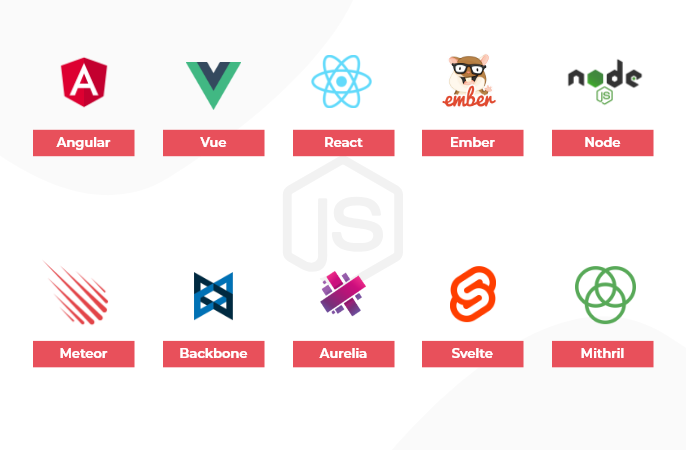Pulse of Information
Your source for the latest insights and updates.
Frameworks Face-Off: Which JavaScript Juggernaut Reigns Supreme?
Discover the ultimate showdown of JavaScript frameworks! Which one will claim the crown? Uncover the winner in this epic face-off!
Comparing React, Angular, and Vue: Key Differences You Need to Know
When it comes to modern web development, React, Angular, and Vue stand out as the three most popular JavaScript frameworks. Each of these frameworks has its unique features and advantages that cater to different development needs. React is often preferred for its component-based architecture, which promotes reusability and flexibility, making it a favorite among developers working on large-scale applications. In contrast, Angular offers a complete solution with its comprehensive framework that includes everything from routing to state management, making it ideal for enterprise-level projects. On the other hand, Vue strikes a balance between the two, offering a gentle learning curve alongside powerful features, making it suitable for both beginners and experienced developers.
In terms of performance, the frameworks also exhibit key differences. React utilizes a virtual DOM, enhancing rendering efficiency, while Angular's real DOM can lead to performance bottlenecks in larger applications unless optimized correctly. Vue, however, combines the best of both worlds by utilizing a virtual DOM as well, providing smooth performance without the complexity of Angular. Additionally, considering community support and resources is crucial; React benefits from a vast community and numerous third-party libraries, while Angular has strong backing from Google, and Vue's community is rapidly growing, bringing new contributions to the ecosystem.

The Evolution of JavaScript Frameworks: A Deep Dive into Modern Development
The evolution of JavaScript frameworks has dramatically transformed the landscape of web development. Starting from the humble beginnings with jQuery, which simplified DOM manipulation and offered a way to streamline client-side scripting, developers soon sought more organized approaches to build complex applications. This led to the emergence of frameworks like AngularJS and React, which introduced component-based architecture, enabling reusable and maintainable code. By embracing single-page applications (SPAs), these frameworks allowed for a more dynamic user experience, ultimately changing how developers design and structure their projects.
As the demand for faster and more efficient applications grew, so did the innovation in JavaScript frameworks. The rise of Vue.js and Svelte showcased a shift towards simplicity and performance, attracting developers looking for alternatives to larger frameworks. With the introduction of server-side rendering and static site generation in frameworks like Next.js, the SEO landscape for JavaScript applications has also evolved. Today, the landscape continues to advance as developers embrace new paradigms like micro-frontends and Jamstack, marking an exciting new chapter in modern development.
Which JavaScript Framework Should You Choose for Your Next Project?
When selecting a JavaScript framework for your next project, it's essential to consider factors such as performance, scalability, and the learning curve. Each framework has its strengths: for instance, React excels in building user interfaces with its component-based architecture, while Vue.js offers an approachable learning experience and flexibility. Angular, on the other hand, is a great choice for large-scale applications due to its comprehensive set of tools and strong community support. To help you decide, think about your project requirements and team expertise.
Additionally, it's worthwhile to evaluate the long-term sustainability of the framework you choose. A framework with robust community support can provide better resources, including libraries and documentation. For those focused on modern web applications, frameworks like Svelte are gaining popularity for their speed and simplicity. In contrast, if your team is well-versed in JavaScript, using a more complex framework like Angular may lead to better code maintainability and performance optimization in large applications. Ultimately, the right choice will align with your project goals and team's capabilities.